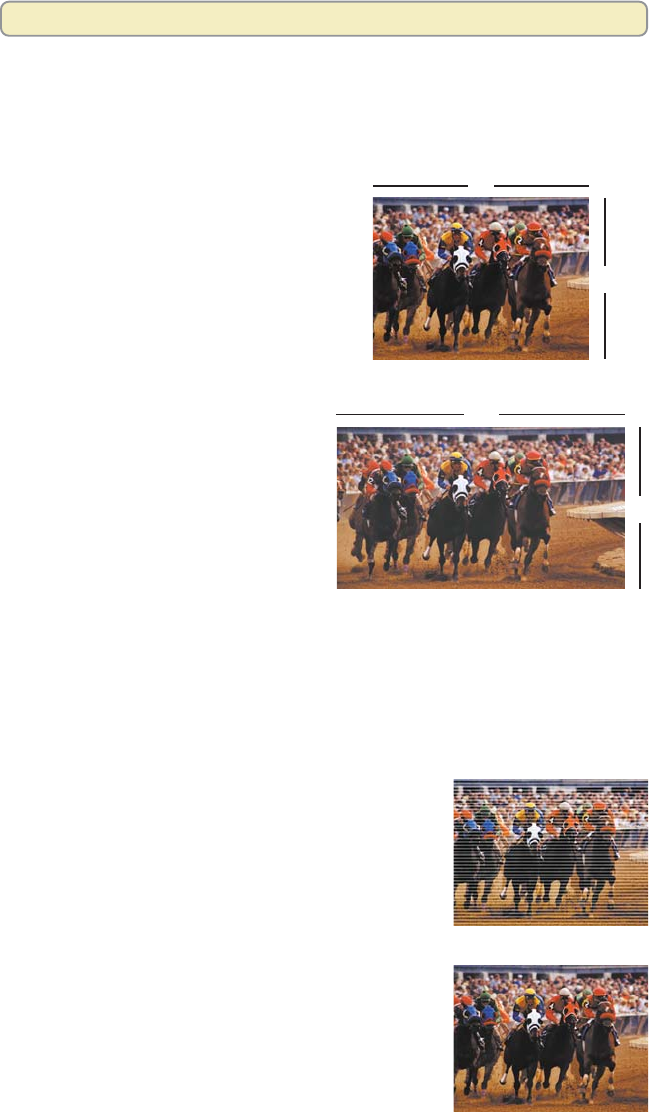
4
How Programs Are Formatted
Programs are broadcast in various picture formats. The picture format is one
factor that determines how your television displays a program. A picture format
is made up of the picture’s aspect ratio and screen resolution.
Aspect Ratios
The aspect ratio of a picture is the ratio
of its width to its height. A standard picture
format is 4 units wide for every 3 units tall,
so its aspect ratio is 4 x 3, or 4:3.
A wide picture format has an aspect
ratio of 16:9, meaning that the picture
is 16 units wide for every 9 units tall.
Screen Resolution
The screen resolution indicates the amount of detail that the picture displays.
Resolution is identified by the number of display lines on the screen. For
example, a resolution of 1080i indicates that the screen shows 1080 lines in
an interlaced display, and 480p means that the screen shows 480 lines in a
progressive display.
Progressive and interlaced describe the technique that your HDTV uses to “paint”
the picture on the screen.
With the interlaced method, half of the lines on the
screen are updated with every new video frame. In
one frame, an interlaced screen updates all of the
odd-numbered lines on the screen. In the next frame,
it updates all of the even-numbered lines.
The progressive method, on the other hand, updates
each line on the screen every time the frame changes.
Get Started
Standard (4:3)
3
4
Wide (16:9)
9
16
480 Interlaced
480 Progressive


















